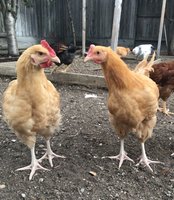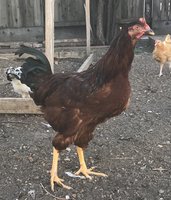- Sep 14, 2014
- 83
- 65
- 131
Post pictures of your capons. I’ll start by posting a few of the capons I’ve raised.
Please include the breed, age, and if it’s a processed picture, the weight.
Tasting notes are also welcomed.
Seems to be uncommon to find pictures of heritage breed capons and I’m trying to figure which breeds are worth caponizing. I’ll list my own personal notes on the breeds as well.
Please include the breed, age, and if it’s a processed picture, the weight.
Tasting notes are also welcomed.
Seems to be uncommon to find pictures of heritage breed capons and I’m trying to figure which breeds are worth caponizing. I’ll list my own personal notes on the breeds as well.



 . They are decent/ good foragers, but i wish they foraged more. The breeds that forage a lot seem to have much better flavor once processed.
. They are decent/ good foragers, but i wish they foraged more. The breeds that forage a lot seem to have much better flavor once processed. 

